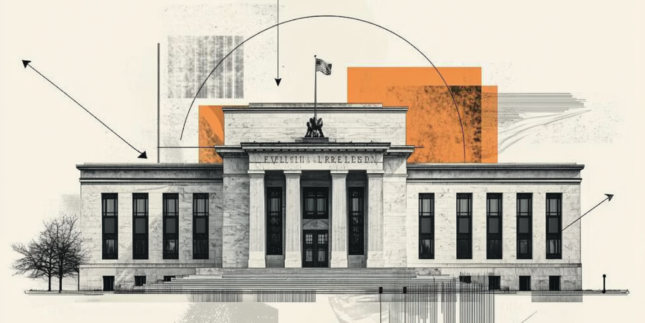USD/JPY turns upside down as US Dollar slumps
- USD/JPY slides to near 149.30 as the US Dollar underperforms its peers.
- The US Dollar weakens as US bond yields plunge sharply.
- Hot Japan’s National CPI data for January boosts BoJ hawkish bets.
The USD/JPY pair gives up its intraday gains and turns negative in Tuesday’s North American after failing to hold above the psychological figure of 150.00 earlier in the day. The asset declines to near 149.30 as the US Dollar (USD) falls sharply due to a significant decline in bond yields.
10-year US Treasury yields are down 1.7% to near 4.32% at the press time. The demand for US bond yields rose significantly due to an increase in market expectations that the Federal Reserve (Fed) will resume the policy-easing cycle in the June policy meeting.
According to the CME FedWatch tool, the likelihood for the Fed to cut interest rates in the June meeting has increased to 76% from 56% a week ago. The tool also shows that the Fed will keep interest rates steady in the current range of 4.25%-4.50% in the March and May meetings.
Fed dovish bets have accelerated after the release of the United States (US) flash S&P Global PMI data for February, which showed that the service sector activity declined for the first time after 25 months.
Meanwhile, the Japanese Yen (JPY) has been outperforming for the past few weeks amid firm expectations that the Bank of Japan (BoJ) will raise interest rates again this year. BoJ hawkish bets are based on accelerating inflationary pressures. Japan’s headline National Consumer Price Index (CPI) accelerated to 4% in January, the highest level seen in two years.
Japanese Yen FAQs
The Japanese Yen (JPY) is one of the world’s most traded currencies. Its value is broadly determined by the performance of the Japanese economy, but more specifically by the Bank of Japan’s policy, the differential between Japanese and US bond yields, or risk sentiment among traders, among other factors.
One of the Bank of Japan’s mandates is currency control, so its moves are key for the Yen. The BoJ has directly intervened in currency markets sometimes, generally to lower the value of the Yen, although it refrains from doing it often due to political concerns of its main trading partners. The BoJ ultra-loose monetary policy between 2013 and 2024 caused the Yen to depreciate against its main currency peers due to an increasing policy divergence between the Bank of Japan and other main central banks. More recently, the gradually unwinding of this ultra-loose policy has given some support to the Yen.
Over the last decade, the BoJ’s stance of sticking to ultra-loose monetary policy has led to a widening policy divergence with other central banks, particularly with the US Federal Reserve. This supported a widening of the differential between the 10-year US and Japanese bonds, which favored the US Dollar against the Japanese Yen. The BoJ decision in 2024 to gradually abandon the ultra-loose policy, coupled with interest-rate cuts in other major central banks, is narrowing this differential.
The Japanese Yen is often seen as a safe-haven investment. This means that in times of market stress, investors are more likely to put their money in the Japanese currency due to its supposed reliability and stability. Turbulent times are likely to strengthen the Yen’s value against other currencies seen as more risky to invest in.
Forex News
Keep up with the financial markets, know what's happening and what is affecting the markets with our latest market updates. Analyze market movers, trends and build your trading strategies accordingly.





















